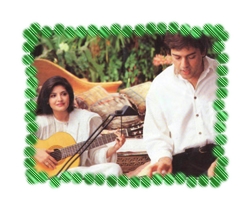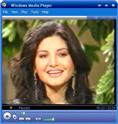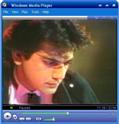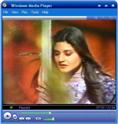Pakistan had missed the disco gravy train. While the world was grooving with John Travolta and his bell-bottomed disco revolution, the closest we had to that genre were the likes of Runa Laila, Alamgir, Mohammad Ali Shayki, Naheed Akhtar and a few underground and dance-hall bands in the sixties. But their music was merely a prequel to
Nazia and Zoheb Hassan, the brother-sister duo whose body of work included more hits than any of the above. And this was before music charts and albums had become big business. India had R D Burman and Bappi Lahri, but Pakistan had produced only a couple of singers or composers who had his/her pulse on the music of the younger generation. "Aap Jaisa Koi", picturised on the buxom Zeenat Aman and a lecherous
Feroz Khan in the 1980 Indian film "Qurbani" brought the teenage
Nazia Hassan out of obscurity. Although, few knew that it had been sung by a British-born Pakistani. Fewer still remembered that it was Sohail Rana who had first used her voice in his popular musical programme for children.
They were able to break into the Indian market primarily because of their association with
Biddu, a Britain-based Indian, with aspirations to be a composer but no real well-known hit in the country of his origin. Biddu's portfolio at the time included Tina Charles and Carl Douglas, and had composed two songs for the Kalyanji-Anandji dominated "Qurbani" soundtrack - "Laila O Laila" and "Aap Jaisa Koi".
Biddu was experimenting with an East-West fusion, that is indigenous melody with synthesized chords and western percussion. He incorporated these elements into Nazia's first album, "
Disco Deewane", which also introduced her brother, Zoheb.
"
Aap Jaisa Koi" could have been a fluke, a flash-in-the-pan for a pretty young thing with the average voice who got a good break. But, rather than being a liability, her fresh and untrained voice proved to be an asset in an era when hardened veterans like Lata, Asha and Noor Jahan ruled the roost on both sides of the border. What was surprising was that this teenager could sing a sultry song with such elan and confidence.
Therefore, not only did this song take Pakistani music to the glitzy gates of disco, it bridged the India-Pakistan divide as well. Before Junoon and Ali Haider stormed the Indian music scene more than a decade later, the Nazia-Zoheb team had already paved the way.
For the first time, fame preceded the singer's first television appearance. Previously, such artists had used television as a platform to launch their careers. Before Zia and his Islamisation could completely "purify" the small screen, a jean-clad Nazia charmed television audiences with her song "Disco Deewane" in 1981 from an album of the same name. Never mind that PTV shot her from the waist up, so the audience wouldn't see her dancing feet, or that the maulvis were in an uproar over the brother and sister dancing together. Listeners wanted more, and they got it. And from that smoke-filled and disco-lit studio, there was no looking back for the siblings who became the Don and Marie Osmond of Pakistan.
They teamed up with Biddu on their next albums, "
Boom Boom" (1984) and "
Young Tarang" (1986) which spawned some more hits. This was also the time that Zoheb experimented with his own compositions and sang "
Chehra", although it was no great digression from Biddu's trademark style. Biddu took them again for a full-length film soundtrack, "
Star", which was released a year later. Unfortunately, while the film flopped, starring Kumar Gaurav as the "star", the songs such as "
Jaana" and "Star" were another notch on the siblings' belt.
While Nazia-Zoheb might not have been the progenitors of Pakistani pop, they were certainly trail-blazers as far as
videos were concerned. Unlike the song items on television with tacky backdrops and little variation on camera angles, Nazia and Zoheb had caught on to the popular and infectious MTV style. Their videos of "
Aag", "
Dum Dum Dee Dee", "
Chehra" and "
Dosti", among others had elaborate storylines and sets. So much so that their video for "
Pyaar ka Jaadu" was inspired by Michael Jackson's video for "Billie Jean". It was not until the pop revival of 1988 that videos of that like were seen again.
They had two hits with Pakistani composers - "
Kabhi Kabhi" (Javed Allahditta) and "
Komal Komal" (Arshad Mehmood).After that they released two more albums "
Hotline" (1987) and "
Camera Camera" (1992). Songs "
Nasha na karo", "
Tali thay Thullay", "
Camera Camera" and "
Dil ki lagi " from the album Camera Camera and "
Paisa ", "
Telephone pyar", "
Hamesha" were big hits of that time and even today as well. According to "Bill Board" the most reliable source for audio album rating. Nazia and Zoheb's album Camera Camera broke all the previous records. Its ten million coppies were sold in a year around the world. "Nasha na karo" is considered to be the reason for its immense success, as this song remained at top positions beyond George Michael's songs. Camera Camera was released with a purpose to promote Nazia-Zoheb's NGO "BAN". Battle Against Narcotics. It was the last master piece from the legands.
Nazia never took music seriously. She had admitted earlier on that music was simply a hobby to her, and she decided to break from it, leaving her brother to hold the fort. His solo effort bombed without Nazia's vocals.
During the course of her career, she received a lot of flak for producing the kind of fluff that she did without any training. In an interview with Mag in 1989, Nazia defended herself: "I love pop music. I love the mood. It's me". Later, in an interview with Dawn in 1998, she said: "It sounds like a terrible thing to say but I have never had any training, neither have I ever really practised. I am sure real musicians will get very upset to hear this, but one thing people have never understood about me is that music for me personally was not very important. It was probably a facet of my personality."
While it may have been a facet of her personality, she sang music that had not yet infiltrated popular consciousness in the early eighties. Apart from the disco wave that had swept London's nightclubs and reached a limited Pakistani audience via pirated cassettes and radio's 1:00 pm English music show, most of Pakistan was still unfamiliar with it. Appearances on television, such as the "Silver Jubilee Show" with Anwar Maqsood, "
Dhanak" and "
Music 89" changed the face of Pakistani music on television. No more aging divas and ancient tunes - pop elbowed out the more sedate ghazal on PTV. If this is modernisation, then surely Nazia can claim plenty of credit for that.













